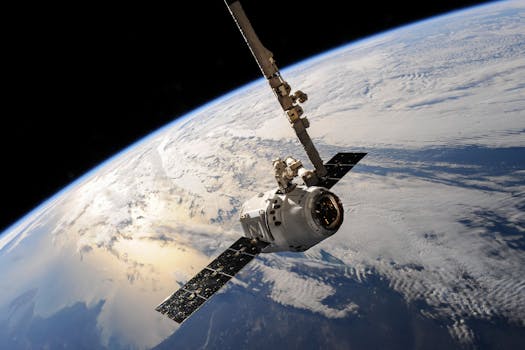
The Future of Satellites: Revolutionizing Global Connectivity
The future of satellites is poised to revolutionize global connectivity, enabling faster and more reliable communication, navigation, and remote sensing. With the increasing demand for satellite-based services, the industry is experiencing a significant transformation, driven by advances in space technology and the growing need for global connectivity. As we look to the future, it is clear that satellites will play a vital role in shaping the world of tomorrow.
One of the key drivers of the satellite industry is the growing demand for satellite-based communication services. With the increasing use of mobile devices and the rising demand for high-speed internet, satellites are becoming an essential component of modern communication systems. The development of new satellite constellations, such as OneWeb and Starlink, is expected to provide faster and more reliable internet connectivity to remote and underserved communities around the world.
Advances in Space Technology
Advances in space technology are also driving the growth of the satellite industry. The development of new launch vehicles, such as SpaceX’s Falcon 9 and Blue Origin’s New Glenn, is making it possible to launch satellites into orbit more efficiently and at a lower cost. Additionally, the use of advanced materials and manufacturing techniques is enabling the production of smaller, more efficient satellites that can be launched into orbit at a lower cost. These advances are making it possible for companies to launch constellations of satellites into orbit, which can provide global coverage and enable a wide range of applications, including communication, navigation, and remote sensing.
The use of satellites is also becoming more prevalent in the field of remote sensing. Satellites are being used to monitor the environment, track weather patterns, and predict natural disasters. The use of satellites for remote sensing is expected to continue to grow, as governments and companies seek to better understand the Earth and its resources. The development of new sensors and imaging technologies is also enabling the collection of more detailed and accurate data, which can be used to inform decision-making and drive innovation.
Challenges and Opportunities
Despite the many opportunities presented by the satellite industry, there are also challenges that must be addressed. One of the key challenges is the growing problem of space debris, which can pose a significant threat to the safety and functionality of satellites in orbit. The development of new technologies and regulations is necessary to mitigate this risk and ensure the long-term sustainability of the satellite industry.
Another challenge facing the satellite industry is the need for greater international cooperation and regulation. As the use of satellites becomes more widespread, there is a growing need for international agreements and regulations to govern the use of space. This includes the development of rules and standards for the launch and operation of satellites, as well as the establishment of protocols for the management of space debris.
Conclusion
In conclusion, the future of satellites is bright, with the industry poised to play a vital role in shaping the world of tomorrow. As the demand for satellite-based services continues to grow, driven by advances in space technology and the growing need for global connectivity, it is clear that satellites will become an essential component of modern communication systems. While there are challenges that must be addressed, the opportunities presented by the satellite industry are significant, and it is likely that we will see significant innovation and growth in the years to come.

